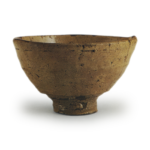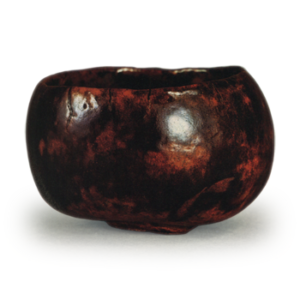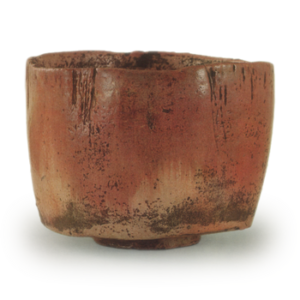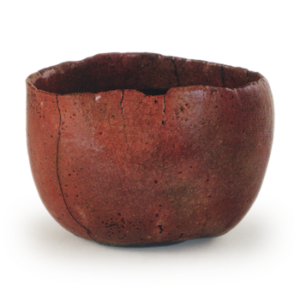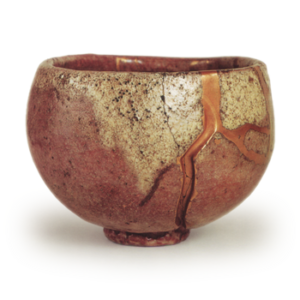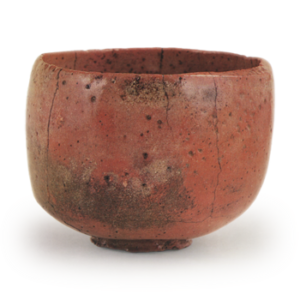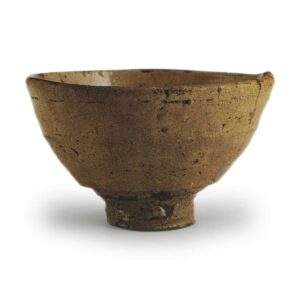
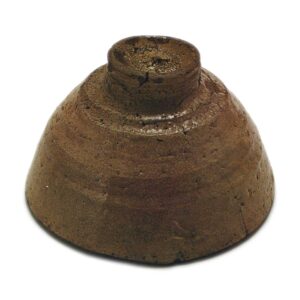
Name: Takeno Ido
Collection: Fujita Museum of Art
Height: 8.5-8.6cm
Diameter: 15.2-15.5cm
Base diameter: 5.8cm
Height: 1.7cm
It is called Takeno Ido because it is said to have been owned by Takeno Jouou, and it also has the name Horai.
The bowl has a large, round, gently spreading shape, a light, bright color tone, and a clean, smooth texture. All of these features, including the roughness and strength, are gently wrapped up in a style that is rare in ordinary large bowls, and combines warmth and dignity. If this stately tea bowl was, as is said, one of Shōō’s prized possessions, it would be a perfect material for gauging some of his tastes.
The clay is the same as that used for ordinary well tea bowls, and only a small part of the foot is visible, but the rough, coarse texture of the clay is enough to appreciate the beauty of the healthy material.
The shape is robust and sturdy, with a thick foot that immediately catches the eye. The foot is made from a single piece of bamboo, and the foot rim is carved out in a single, strong sweep. These are the key features of this tea bowl. From the round, well-rounded waist, the marks of the potter’s wheel extend upwards to the right, creating a gentle series of steps. The pleasing speed of the rotation can be felt in the fluidity of the transition from the foot to the rim.
The glaze that covers the entire surface is a pale loquat-colored glaze with a hint of blue and yellow, and it has a smooth, dull sheen. Compared to other Oido ware, it has a warm, bright, and clean feel. In addition, there are fine cracks on the inside and outside, and the kaeragi that surrounds the inside and outside of the well, which is characteristic of wells, is also magnificent, although there is some flaking in some parts, it is not distracting. In addition, there are small holes dotted around the glaze, which look like they have been made with a needle, but in particular, around the holes, a light pink deer pattern called “moto” appears, adding a subtle touch of beauty to the glaze. The inside of the bowl is not so deep as to be considered deep, but rather has a spacious feel, and near the tea pool, two or three wheel marks can be seen, forming a vivid circular pattern. This is probably the mark of a support stand used when trimming the foot ring, called a shitta.
There are no marks on the inside or outside, and apart from a few repairs to the rim, there are a few vertical cracks and a repair for a slightly large crack.
The black lacquered lid of the box has the gold characters “Horai” on it. The inner and outer boxes are included, and on the back of the outer box lid is a label saying that the characters “Horai” were written by Prince Konoe Naotsugu. It is not known what the name “Horai” is based on, but it is thought that the name was given because the peeling off part of the plum-blossom skin (kairagi) next to the foot of the bowl resembles the shape of a crane and a turtle, and the foot of the bowl was likened to Mount Horai.
It is said that it was originally owned by Takeno Jouou, but later passed to Imai Sohkyu. However, the only evidence for this is a note on the inside of the lid of the box, so it is difficult to determine whether or not this is true.

